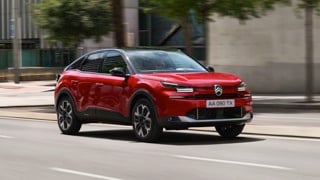By Andy Eastlake, managing director of the Low Carbon Vehicle Partnership
One thing is for sure, 2020 does not look set to be a quiet year in the UK car market. This is true for electric and plug-in vehicles in particular.
There are already several sources of turbulence in the market. For example, company car tax changes are imminent and other moves and incentives look possible in the March Budget, including uncertainty over the future of the plug-in car grants.
Also, there’s the UK transport decarbonisation plan to be set before November’s COP26 summit in Glasgow. Add to this the huge impact of the European regulations on CO2 (under which manufacturers will face steep fines for failing to hit emissions targets) and – dare I mention it? – Brexit.
It would seem that a ‘perfect storm’ is brewing.
The impact here of the European regulations, which mean manufacturers will need to sell many more battery electric vehicles (BEVs) and hybrids, is closely linked with Brexit.
For 2020, the UK will remain aligned with European regulations, but, thereafter, the future is uncertain. The Government (at least the previous Conservative one) has, however, stated that UK environmental regulations will be at least as forceful as those prevailing in Europe.
Whether we take the Government at its word about the future, 2020 is surely shaping up to be a big year in the transition to electric road transport. The signs of change have been in the air for a while. Since August, BEV sales have rocketed and there are now around 100,000 on UK roads.
The company car tax changes are sure to drive demand growth for BEVs while private buyers too are showing increasing interest, particularly as word gets around about real range capabilities, fuel (and other) cost savings possible and as the recharging network grows and improves.
How vehicle manufacturers respond to this UK demand growth is difficult to predict.
Supply capacity across different manufacturers varies with long lead times seen for some models and others available almost immediately. How this develops will depend on a variety of factors including demand in other markets, the position of different manufacturers and – of course – how the UK ‘does’ Brexit.
However, the manufacturers have known about the European regulations for a long while and all the signs are (new model announcements etc.) that they have been gearing up rapidly in preparation.
So, 2020 will be a year to keep your ear close to the ground; to follow policy developments and manufacturer announcements closely. There will undoubtedly be some exceptional deals to be had if you can be flexible in this volatile market, but if we can collectively continue to show the UK market is ripe for ULEVs, I’m optimistic the OEMs will deliver.
The electric vehicle revolution is undoubtedly under way, but the ‘road to zero’ – particularly in its earlier stages – had a few potholes and is likely to remain winding and bumpy.
But we’ll be doing all we can to make sure the transition takes place as rapidly as possible and that inevitable bends and bumps are successfully navigated.
Click here to read how EV supply is set to increase but still unlikely to meet fleet demand.



















Login to comment
Comments
No comments have been made yet.